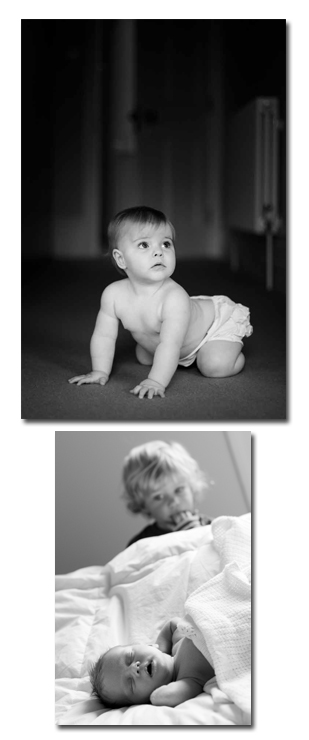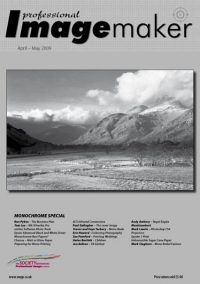articles/Portraiture/singingintherain-page2
Singing in the Rain - part 2 of 1 2 3
by Helen Bartlett Published 01/04/2009

Background
Once we have found our light then the second thing to look at is your background. I shoot with the decor of the house but there are a few things that I will keep an eye out for when shooting indoors. If there is a second window behind your subject you may wish to close the curtains on this to avoid bright patches in the background. Keep an eye out for mirrors. While they can be included in your composition, the reflection can also put you bang in the middle of the photograph which might not be what your client had in mind. You may need to suggest removing the odd item from the shooting area. Dressing gowns on the backs of doors and socks under the sofa are the kind of thing best spotted and pointed out at the time. There is nothing more infuriating than having to remove things in Photoshop that could have been moved on the day. This is particularly important if you are photographing in an area of the house that your clients had not expected you to use.
Fast Lenses and Wide Apertures
On a technical note fast lenses are a must for indoor children's photography if you intend not to use additional lighting.
Shooting at f1.4 is the standard for my work indoors and while you may be able to get away with an f2.8 lens on a good day in a nice bright house, I wouldn't want to rely on that speed. I use the 50mm f1.2 Canon L lens for the majority of my indoor work and this is supplemented by the 85 f1.2, the 35 f1.4 and the 24 f1.4 if I need to get closer in or fit more subjects into my frame.
I love the look of a shallow depth of field, the minimal area of focus and the beautifully ethereal look that can be achieved. Shooting wide open on a fast lens also allows me to minimise clutter while keeping some elements in the background that give a feeling of home: a bookcase here, a picture there. This approach, for me, adds to the depth and the power of an image. Photographing at f1.4 does require a bit of practice, particularly with fast moving children, so I certainly wouldn't recommend trying it for the first time on a paid shoot. So, now we have found the light, checked the background and sorted out the appropriate kit, we come to the fun part: taking the pictures.
How do we do location shoots indoors?
Different Ages
There are certain ages that simply thrive on being indoors. Babies work particularly well when photographed on their parents' bed, free to roll around happily and snuggle up in the duvet and the pillows. I tend to photograph all babies under the age of one indoors for at least a part of their session whatever the weather, although if it is fine we usually take them outside for a bit too.
The master bedroom of a house often, although not always, has the best light, which helps here too. It is nice to get parents piled onto the bed for family shots and it is very easy to while away an hour playing games and singing songs to a smiling happy little baby. Watch out once they start to crawl though as it doesn't take long to get to the edge of the bed.
Of course things aren't usually that easy - the photo shoot booked for a November morning when the rain is pouring down is unlikely to be the shoot with a baby who is too young to crawl. More often we are faced with two, three or four very active small children who we need to capture in a single image for the family Christmas card, usually in a basement flat with very few windows. This is the challenge of our chosen line of work, and being able to photograph and produce the results we need in these conditions is one of the requirements of professional photography.
Please Note:
There is more than one page for this Article.
You are currently on page 2 Contact Helen Bartlett
1st Published 01/04/2009
last update 09/12/2022 14:58:58
More Portraiture Articles
There are 0 days to get ready for The Society of Photographers Convention and Trade Show at The Novotel London West, Hammersmith ...
which starts on Wednesday 15th January 2025





